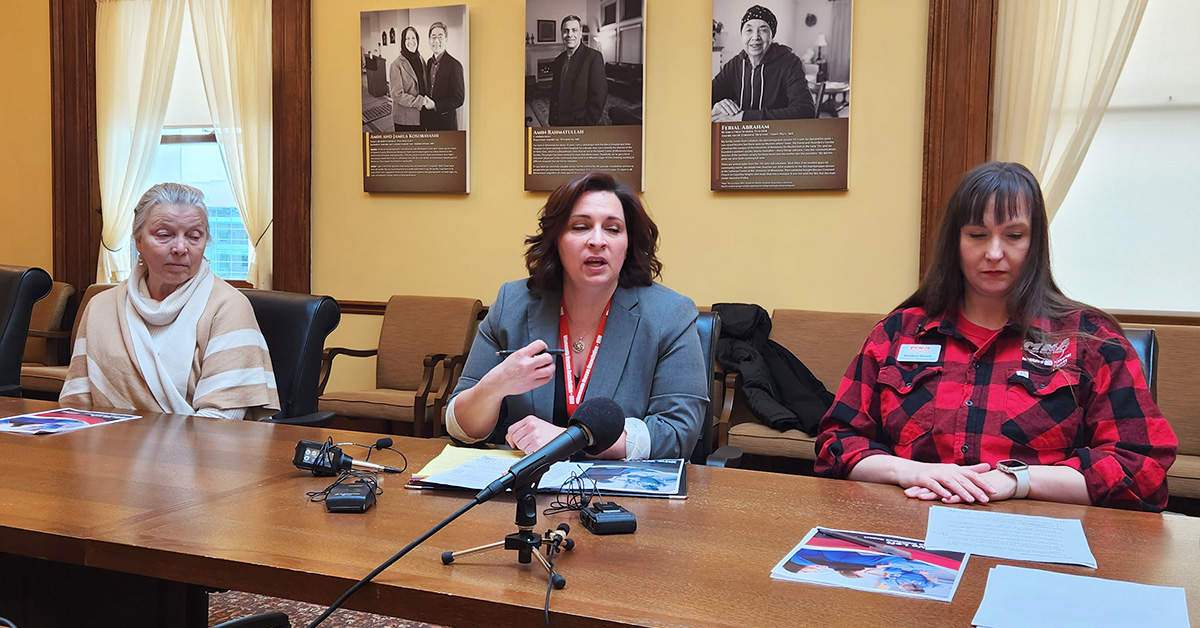Minnesota nurses release “Why We Left: 2023 Nursing Workforce Report”

Staff report
National Nurse Magazine - April | May | June 2023 Issue
This spring, nurses with the Minnesota Nurses Association released “Why We Left: 2023 Nursing Workforce Report,” identifying the top issues driving nurses away from bedside care in Minnesota. The report identified chronic understaffing, hospital management, and other working conditions as the top issues driving nurses away from bedside care.
The document is based on responses by nearly 500 nurses to a survey of more than 2,400 MNA nurses who left a bedside position within the past year and did not take a new position in an MNA-represented hospital.
The survey found that the number-one issue identified by nurses as the top factor driving them from the bedside was insufficient staffing, followed by stress or “burnout,” management issues, and other working conditions. As described in the 2020 “Deadly Shame” report by National Nurses United, the term “burnout” actually refers to the moral distress and moral injury nurses experience from working with insufficient nurse staffing, rationing and crisis standards of care, and limited resources, including support staff, beds, medications, or supplies.
In March, several nurses shared the results of the new report in a roundtable discussion held at the Minnesota State Capitol. Nurses spoke about their reasons for leaving the bedside, including the top factors identified in the survey, and shared further survey results.
Highlights of the survey show:
- Stress and “burnout” (75 percent), chronic understaffing (71 percent), working conditions (63 percent), and management issues (49 percent) were the top drivers of nurse departures.
- In particular, insufficient staffing was the singular top issue cited by nurses as the reason they left their bedside care position.
- Of those who identified stress or so-called “burnout” as a driving factor in their departure, nearly 82 percent also cited short staffing concerns, 71 percent cited working conditions, and 52 percent cited management concerns.
- Compensation and the Covid-19 pandemic were among the lowest-cited reasons to leave the bedside; of those who cited the pandemic, over 90 percent also cited stress or “burnout” and over 84 percent cited short staffing as contributing to their decision to leave bedside nursing.
- Of the 31 nurses who reported retiring, 100 percent cited stress or “burnout,” 77 percent cited short staffing, and 64 percent cited working conditions as contributing factors.
The survey also asked respondents to elaborate on why they left their previous position. One nurse cited, “Burn out, unmanageable nurse-to-patient ratios. Constant understaffing, not enough CNAs resulting in impossible conditions for RNs.”
Another nurse responded saying, “My previous hospital that I loved was closed due to corporate greed ... I tried out [another hospital] – this was the most miserable nursing position I’ve ever held. Always short staffed, managers tried to make us feel guilty like we weren’t team players when we wouldn’t pick up double shifts to fix the lack of staff problem. There was a severe and poor low staffing ratio as far as support staff ... I never felt so unsupported and short staffed ... while taking care of struggling Covid patients on bipap. I just couldn’t do it anymore. It wasn’t safe. I witnessed turnover like I’ve never seen in my whole career as a nurse. In one year’s time I was at the halfway point on the seniority list. I gave [the hospital] one year, a year I will never get back.”
Minnesota nurses want to be at the bedside doing what they love, providing exceptional care to their patients. But the corporate health care policies of hospital CEOs are driving nurses away from the bedside.
There are more than enough nurses in Minnesota to meet the needs in our hospitals. These nurses want to stay at the bedside for the near future, despite the often unsafe and unsupportive work environments they have faced. The report asked nurses what changes would need to be made for them to consider a return to the bedside. The top change needed was to improve staffing and, in total, more than 80 percent of nurses indicated a willingness to return to bedside nursing if hospital conditions improved.
However, without changes that will solve the crisis of understaffing and retention that hospital CEOs created, nurses will continue to be pushed away from the bedside and from the careers and patients they love.
Minnesota nurses are ready to fight and win legislation and contract language to put patients before profits, retain nurses at the bedside, and prioritize quality patient care throughout Minnesota.
The full report can be found at https://mnnurses.org/issues-advocacy/issues/why-we-left-nursing-workforce-report/.